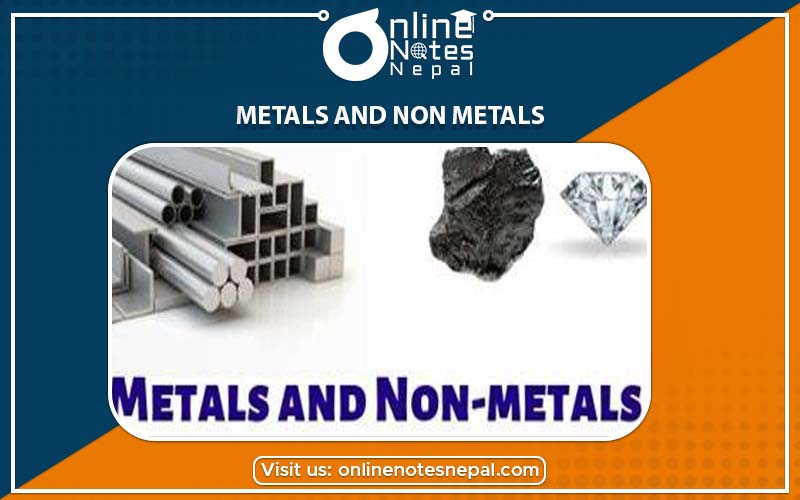Published by: BhumiRaj Timalsina
Published date: 25 Jan 2022

Various types of substances are found around us. Some of them are soft, some are hard, some are pure and some are impure. They may be found in different states. Among them, pure substances are known as elements. Till now, 118 elements have been discovered. These elements are divided into three types on the basis of their properties. They are metals, non- metals and metalloids. The majority of the elements are metals. Metals are hard, good conductor of heat and electricity, malleable and ductile. Some of the common examples of metals are copper, silver, gold, aluminium etc. Non- metals are non- malleable and non- ductile. They are soft in nature and are the bad conductor of heat and electricity. Some of the common examples of non- metals are carbon, sulphur, iodine, nitrogen etc. There are also some elements that show both the properties of metals and non- metals. These elements are known as metalloids. They conduct heat and electricity better than non- metals but not as good as metals. Some of the common examples of metalloids are silicon, germanium and antimony.
Metals are opaque, lustrous elements that are good conductors of heat and electricity. Most of the metals are malleable and ductile. Most of them are hard. When we hit the metals, it produces tinkling sound. We use metals in our daily life activities. Metals are used for making furniture, utensils, jewellery, etc. They are used in transportation, communication, construction, industries, electrical power production, and distribution etc. Some of the common examples of metals are gold, silver, iron, aluminium, copper, brass, etc. Most of the metals exist in the solid state at room temperature except some metals like mercury, gallium etc. These metals exist in the liquid state.
Non- metals are those elements that lack metallic properties. They cannot be beaten into thin sheets and cannot be folded and cannot be drawn into thin wires like metals. They are the bad conductor of heat and electricity but graphite though being a non- metal can conduct heat and electricity. They are non- lustrous. They are also used in our daily life activities like used to make medicines, utensils, containers, etc. Some of the common examples of non- metals are carbon, sulphur, phosphorus, chlorine etc.
An alloy is a defined as a metal made by combining two or more metallic elements. It is made from the combination of two or more metals or metals and non- metals. We use alloys in our daily life activities. More than 90% of metals used are in the form of alloys. About the preparation of alloys, two or more than two metals are mixed in their molten state and then cooled to obtain the solid product as alloys. The common alloys that are used in our daily life activities are given below,
The properties of alloys are different from the properties of its components. The physical and chemical properties of an alloy can be modified by heat treatment and mechanical working. The main purpose of making alloys is given below,